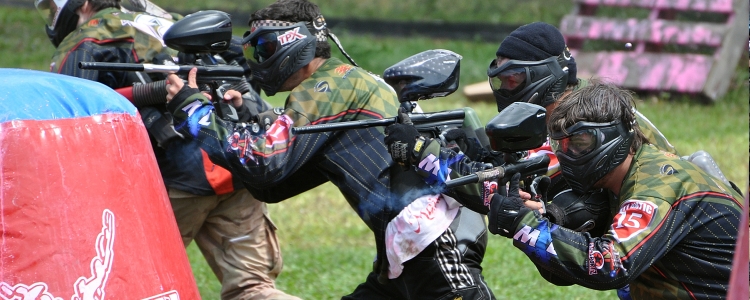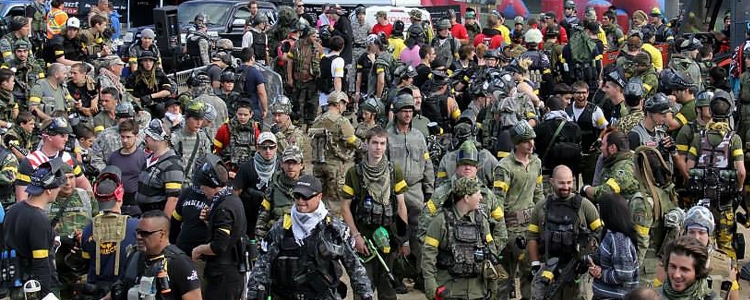originally published in issue 3:1 of RECON Magazine
The troops along the border looked into the clear starry sky happy that the incessant rains had finally abated. It was June 22 and up to now the rain looked like it would never stop as spring still showed no signs of giving way to summer. With the miserable rain gone the soldiers could get back to doing what soldiers on guard duty do at 3:15am, thinking about when their replacements would arrive to relieve them, home, warm beds and hot meals.
The sudden crash and explosion of artillery shells all around them following by the roar of diesel engines and screech of tank tracks broke the peacefully early morning calm.
In an instant the border guard's lives would change forever as would the course of modern human history. The 3.2 million troops secretly moved into position between the Baltic Sea and Black Sea in Eastern Europe over the previous months unleashed the full fury of Adolf Hitler's war machine onto an unsuspecting Russia. The year was 1941 and Operation Barbarossa, the German invasion and attempted destruction of Russia had begun.
The World War II German high command using the highly successful mechanized combined arms forces (armor and infantry attacking in unison) Blitzkrieg tactics that had allowed the Wehrmacht (German army) to conquer western Europe in only a few short months. The Wehrmacht's string of successes and record of rapid advances was about to be ground to a halt and ultimately defeated by a determined Russian army using a different and unexpected tactic.
Up to that point in the war the tactics of the defenders encountered by German forces had been predictable. The defenders would form a line in an attempt to hold back the attacking forces long enough for reinforcements to arrive. The German Blitzkrieg (lightning war) operational doctrine was to use highly mobile combined arms forces attacking with speed and surprise to punch through enemy lines quickly, preventing an enemy from having the time to form a solid defense. Once through the initial line of defense the combined arms forces could attack the enemies' rear areas and supply lines eventually isolating and completely destroying the enemy. Speed, surprise and a high degree of mobility were essential for the success of the Blitzkrieg.
The Russian army for a number of reasons was unable to form a traditional line of defense against the German onslaught. During Barbarossa while attempting to drive deep into Russia and end the war quickly the Wehrmacht would punch through one line of defense only to immediately encounter a second line of defense. Unable to use their superior speed and mobility to envelop and destroy the first line the German's where forced to delay and engage the second line. This delay would give the first line an opportunity to fall back and create a third line of defense. This multilayered defensive strategy was born out of necessity rather then superior planning. The Russian army had unwittingly developed a tactic to counter the seemingly invincible German Blitzkrieg.
No matter how well planned or how well executed no defensive operation will succeed unless you can bring the maximum volume of fire on to the attacking force from every layer of the defense. When the attackers make initial contact the maximum number of markers must quickly be fired at the attackers without running the risk of accidentally eliminating players on your team. If the attackers see only one or two defenders to their front but paint is raining down from a number of directions the attack will falter and stall while they try to regroup. Volume of fire alone will not ensure victory but a lack of fire will guarantee defeat. The layered defense when used properly on the paintball field will grind any attacking force to a halt and help your team win the game.
In a layered defense all players give each other mutually supporting arcs of fire in every direction. Once your players are deployed you will have every angle of approach to your position covered by a minimum of three markers that can return fire on the attacker. No matter from what direction the attackers approach you will have one of your players returning fire giving the rest of you team a chance to shift the layered defense to confront the attacker.
Another huge advantage of the layered defense is that the attacking team cannot flank your position because there are no weak points. Your defensive set up is equally effective from any side so no matter from which direction your defensive perimeter is approached there is no weak point. If your players are staggered in layers they need only to change the direction they are aiming to cover all angles of approach.
When the attack starts it is vital that all members of your team communicate with each other so every defender knows what is happening at all times. Players in the back of the position cannot clearly see what is going on up front so the front defenders must relay information back. This information is important because as the battle progresses you must be prepared to shift defenders around to form up your lines or to replace eliminated players during the game.
Once you have achieved fire superiority, the attack has been bogged down and you are sure that the attackers will not be able to withdrawal, the front line defenders can easily keep the attackers pinned giving the rear line of defenders an opportunity pull back. Once the rear line is out of the fight they can reorganize, move out of the position around to the flank of the attacking force and counter attack. A quick and decisive counter attack is important, as long as the attackers are at your doorstep you run the risk of them getting reorganized themselves and continuing the attack.
The other team cannot win the game if you keep your flag. With proper communication and a little practice you and your team will be able to build an impenetrable wall around your flag that no one will be able to overcome. Just like the Russian army learned in 1941, layering your defense is the key to holding the line every time.





No comments:
Post a Comment